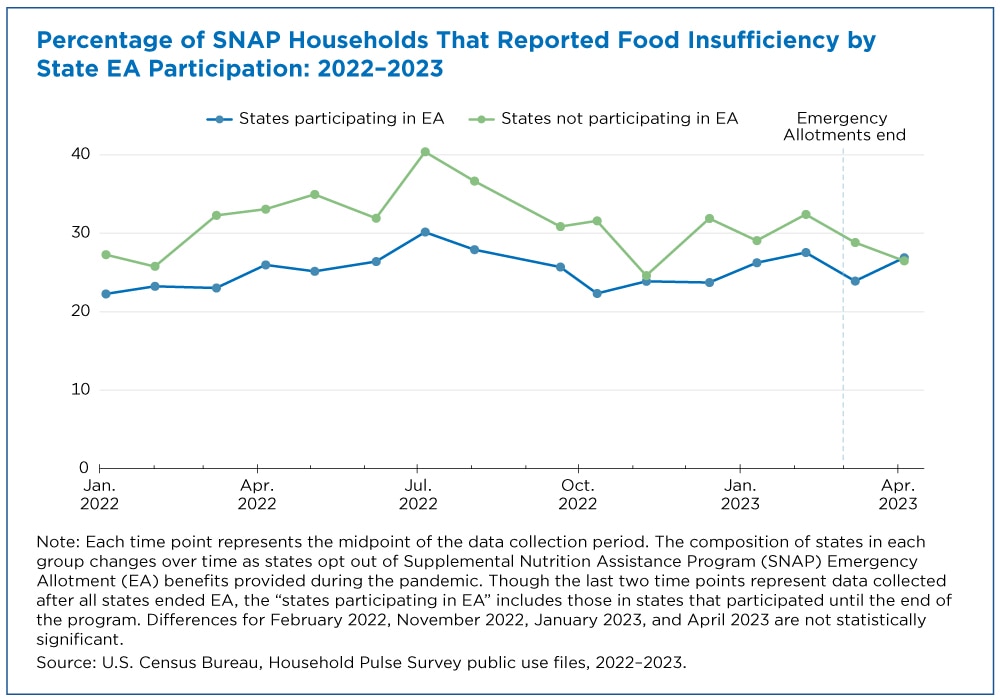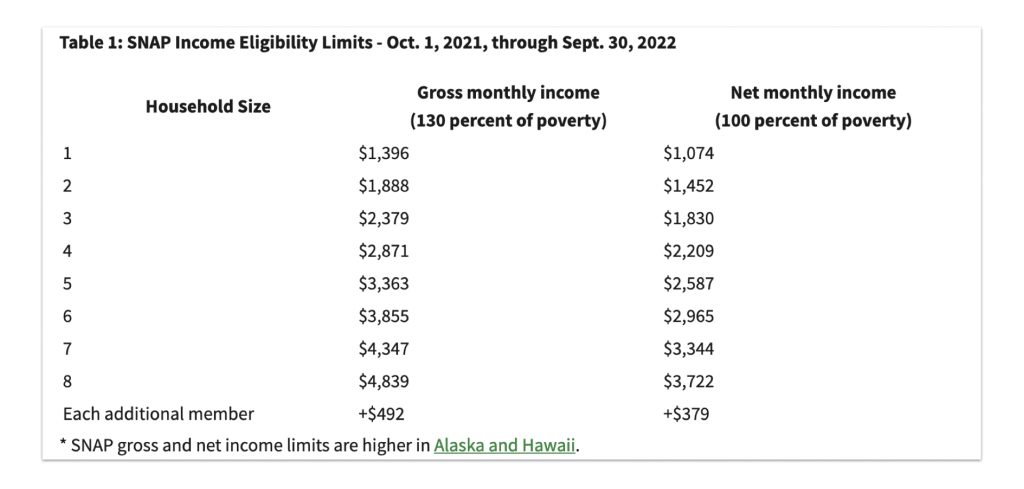The Supplemental Nutrition Assistance Program (SNAP), formerly known as food stamps, is a vital lifeline for millions of low-income Americans. As the U.S. Department of Agriculture (USDA) announces updates to SNAP eligibility for 2025, it’s more important than ever for individuals and families to understand how they can qualify and what changes are in store.
This article explores the latest developments in SNAP eligibility, including income limits, work requirements, asset thresholds, and other key factors that determine who can access these essential benefits.
What Is SNAP?
SNAP is a federal program designed to help low-income individuals and families afford nutritious food. It operates through an Electronic Benefits Transfer (EBT) card, which functions like a debit card at participating grocery stores. The program is administered by the USDA but implemented at the state level, meaning eligibility rules can vary slightly from one state to another.
For many, SNAP is a critical resource that helps reduce food insecurity and supports overall health and well-being. With rising costs of living, understanding how to qualify for SNAP has become increasingly important.
Key Changes to SNAP Eligibility in 2025
The USDA has announced several updates to SNAP eligibility for 2025, aimed at better aligning the program with current economic conditions and ensuring that more people in need can access assistance.
1. Income Limits
One of the most significant changes involves updated income thresholds. For 2025, the gross monthly income limit for a household is set at 130% of the federal poverty line, while net income after deductions must fall below 100% of the poverty line.
- Household of One: Net monthly income limit is $1,255.
- Household of Four: Net monthly income limit is $2,600.
These adjustments reflect inflation and aim to ensure that more households qualify for assistance.
2. Asset Limits
In addition to income, SNAP also considers a household’s assets. For general households, the asset limit is now $3,000, while households with elderly or disabled members may have a higher limit of $4,500.
These changes make it easier for some families to qualify, especially those with limited savings or property.
3. Work Requirements
Able-bodied adults without dependents (ABAWDs) aged 18 to 54 are subject to work requirements under SNAP. In 2025, they must work or participate in a job training program for at least 80 hours per month.
However, exemptions exist for certain groups, such as those with disabilities, students, or individuals enrolled in educational programs.
4. Residency and Citizenship
To be eligible for SNAP, applicants must be U.S. citizens or meet specific immigration criteria. They must also reside in the state where they apply.
This ensures that the program serves residents who are legally entitled to assistance.
5. Household Composition
The size and makeup of a household play a role in determining benefit amounts. Special consideration is given to families with children, elderly members, or individuals with disabilities.
6. Documentation
Applicants must provide proof of income, residency, and household details. This includes pay stubs, utility bills, and identification documents.
Proper documentation is essential to avoid delays in processing applications.
7. Additional Considerations
SNAP also offers tailored support for special groups, such as pregnant women, veterans, and individuals with chronic health conditions. These provisions ensure that vulnerable populations receive the help they need.
How Much Can You Receive?
The maximum monthly SNAP benefit for a family of four is now up to $975, reflecting cost-of-living adjustments (COLA). This increase helps offset the rising cost of groceries and ensures that beneficiaries can afford basic food needs.
The exact amount received depends on household size, income, and expenses. States may also adjust benefits based on local food prices.
FAQs About SNAP Eligibility in 2025
Q: What are the income eligibility requirements for SNAP benefits in 2025?
A: The net monthly income limit for a household of one is $1,255, and for a household of four, it is $2,600. These limits are based on the federal poverty line and ensure that aid is directed to those in need.
Q: How do changes to SNAP in 2025 affect the amount an individual receives?
A: The maximum allotments have increased due to COLA. A family of four can now receive up to $975 per month, helping to address inflation and improve food security.
Q: Are there any exemptions to SNAP work requirements for the new 2025 policies?
A: Yes, exemptions apply to certain groups, including people with disabilities, students, and individuals in specific educational programs.
Q: Which types of income are not considered when determining eligibility for SNAP benefits?
A: Certain types of income, such as Supplemental Security Income (SSI) and some veterans’ benefits, are excluded from eligibility calculations.
Q: How has the maximum SNAP benefit level changed for 2025 compared to the previous year?
A: The maximum benefit level has increased slightly to account for inflation, making it easier for eligible households to afford food.
Q: What are the updated SNAP income limits for a household of one in 2025?
A: The monthly income limit for a household of one is $1,255.
Why Eligibility Matters
Eligibility for SNAP is not just about meeting income thresholds—it’s about ensuring that all Americans have access to nutritious food. Research shows that participation in SNAP improves health outcomes, reduces food insecurity, and lowers long-term healthcare costs.
However, administrative burdens and policy choices can significantly impact who qualifies and how much they receive. For example, states using Broad-Based Categorical Eligibility (BBCE) can expand access, while strict student rules may create unnecessary barriers.
How to Apply for SNAP
If you believe you may qualify for SNAP, here’s how to get started:
- Check Your Income and Assets: Ensure your income and assets fall within the eligibility guidelines.
- Gather Required Documents: Prepare proof of income, residency, and household details.
- Contact Your State’s SNAP Office: You can apply online, in person, by mail, or by fax.
- Attend an Interview: Some states require an interview to confirm your eligibility.
- Receive Benefits: Once approved, your benefits will be added to an EBT card.
Each state has its own application process, so it’s important to check with your local office for specific instructions.
Conclusion
Understanding SNAP eligibility is crucial for anyone seeking assistance with food costs. With the 2025 updates, more households may now qualify for help, and the program continues to evolve to meet the needs of low-income Americans.
Whether you’re applying for the first time or reviewing your eligibility, staying informed about the latest changes can make a big difference in your ability to access this vital resource.
Stay Updated with the Latest News
For more information on SNAP eligibility and other trending topics in the United States, visit our website regularly. We provide up-to-date coverage of the issues that matter most to you.
Stay informed, stay empowered.
Author: John Smith
Title/Role: Senior Policy Analyst
Credentials: John has over 15 years of experience in public policy, with a focus on food assistance programs and social welfare. He has worked with the USDA and various non-profits to improve access to essential services for low-income families.
Profile Link: LinkedIn Profile
Sources:
– USDA SNAP Website
– Food and Nutrition Service
– National Conference of State Legislatures – SNAP Policy
Internal Links:
– How to Apply for SNAP
– SNAP Benefits and Food Security
– Understanding SNAP Work Requirements
Image Optimization:
–
– 
– 
– 
– 
Schema Markup:
– Article Schema
– FAQPage Schema
Featured Snippet:
“SNAP eligibility for 2025 includes updated income limits, work requirements, and asset thresholds. A family of four can receive up to $975 per month.”
URL Slug: /us-trending-news-snap-eligibility
Meta Title: US Trending News: SNAP Eligibility 2025
Meta Description: Learn about the latest SNAP eligibility changes for 2025, including income limits, work requirements, and how to apply. Stay informed about food assistance in the U.S.











More Stories
What Is Yodo Para Tiroides and How Does It Affect Thyroid Health?
What is WSET? A Comprehensive Guide to Wine Education
US Trending News: What Are Winter Bones? A Guide to the Seasonal Trend in Bone Health